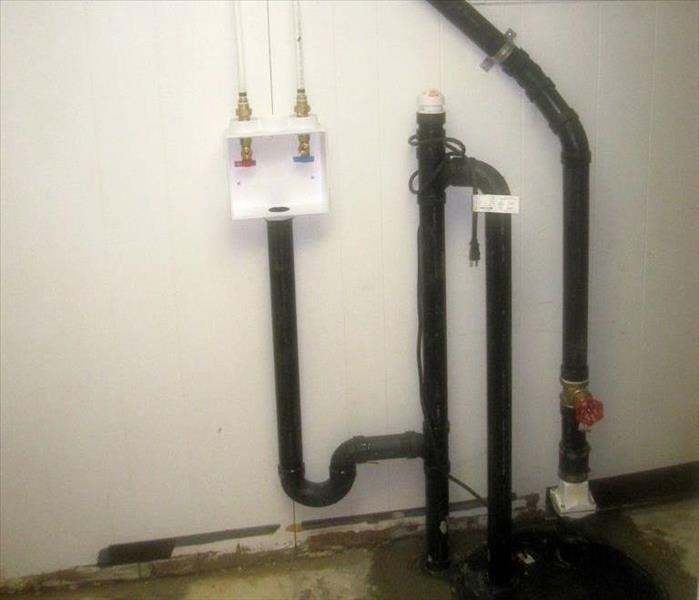Avoid Sump Pump Problems!
8/3/2020 (Permalink)
A sump pump can be the difference between a costly flooding incident and a dry basement. However, it’s also important to keep your sump pump in good shape so it can keep your basement dry all year long. To learn more about sump pump maintenance, check out these common sump pump mistakes to avoid.
- DIY Installation – If you’ve never installed a sump pump, don’t risk doing it yourself. You might end up paying a lot more for damages than for the cost of proper installation. Hire a plumbing professional to avoid the risks of faulty installation.
- No Backup Power – During a powerful storm, your home can lose power, putting your basement at risk for flooding. To ensure your sump pump continues to work during a power outage, connect it to a backup power source, such as a generator or battery backup system.
- Not Testing Your Sump Pump – Test your sump pump system twice a year – before spring and fall – to make sure that it’s in good working condition. To test the system, pour water in the sump pit until it activates the pump switch. If it empties slower than normal, check the discharge pipe or the pump itself for clogs and other issues.
- Ignoring the Discharge Pipe – Check that the drainage pipes are tightly connected and are directed away from your home’s foundation. Also, inspect the pipe for damage and clogs. Seek help at once if you find clogs or damage. Anything that impedes the flow could result in basement flooding due to slow drainage or no drainage at all.
- Letting Debris Get in the Pump – Ensure your sump pump doesn’t sit on debris such as silt or gravel, which could be sucked up into the pump, ruining the motor. Instead, place it on a steady flat brick. Also, ensure the sump basin has a filter fabric around it to stop debris from coming in.
- Ignoring the Float Switch – This part tells the sump pump motor to stop once the water level goes below the float. Your sump pump needs ample space around the float to both float and sink freely.
- If there isn’t enough room or if there is some type of obstruction in the way, the float may cause the pump to work improperly, which can burn up your motor.
- Unplugging the Pump – This can happen if someone unplugs the sump pump and forgets to plug it back in. To prevent this, never unplug the pump or make sure you plug it back in if you do.
- Covering the Sump Pump – Knowing where your sump pump is found is important but if you forget, you might end up piling stuff on top of it. That can result in damaging the sump pump and limiting accessibility. When storing items in your basement, always locate your sump pump first to avoid this problem.
Routine sump pump maintenance goes a long way in guarding against basement flooding. Schedule a thorough inspection with a septic tank maintenance professional or plumber twice a year. For professional water damage repair or mold removal, contact SERVPRO of Lynn/Lynnfield at 781.593.6663.





 24/7 Emergency Service
24/7 Emergency Service
